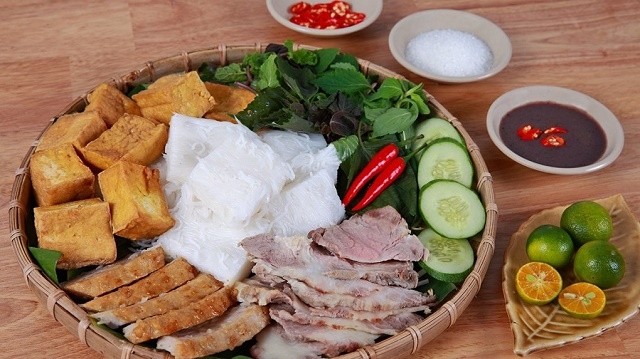As the name suggests, the dish includes bun (rice vermicelli, usually fresh and served without soup), dau (tofu, usually in crispy brown fried cubes), and mam tom (a smelly shrimp paste that can knock out unprepared foodies on first contact).
The key to the dish’s success is the magical shrimp paste – the very soul of the delicacy.
The paste is often served in a palm-sized bowl filled about halfway. Diners are given a pot of sugar and a basket of kumquats for extra seasoning. Whisking the mixture afterward combines the different scents into a wholesome, pungent dip.
Unlike other soup dishes, where the noodles are separated, the noodles used in bun dau mam tom are served in chunks. It is known as bun la, a kind of noodle pressed into patches and chopped into cubes measuring about two fingers long, giving them a harder, firm texture.
The other ingredients for bun dau mam tom, however, are not restricted to tofu only. Eaters can choose from com (a kind of green rice pork nugget), steamed pork, or long lon (steamed pig offal).
Bun dau mam tom is served with cucumber slices and an assortment of herbs.
The dish is usually served on a met, a round-shaped bamboo-made flat container, typically used to present food in the north.




